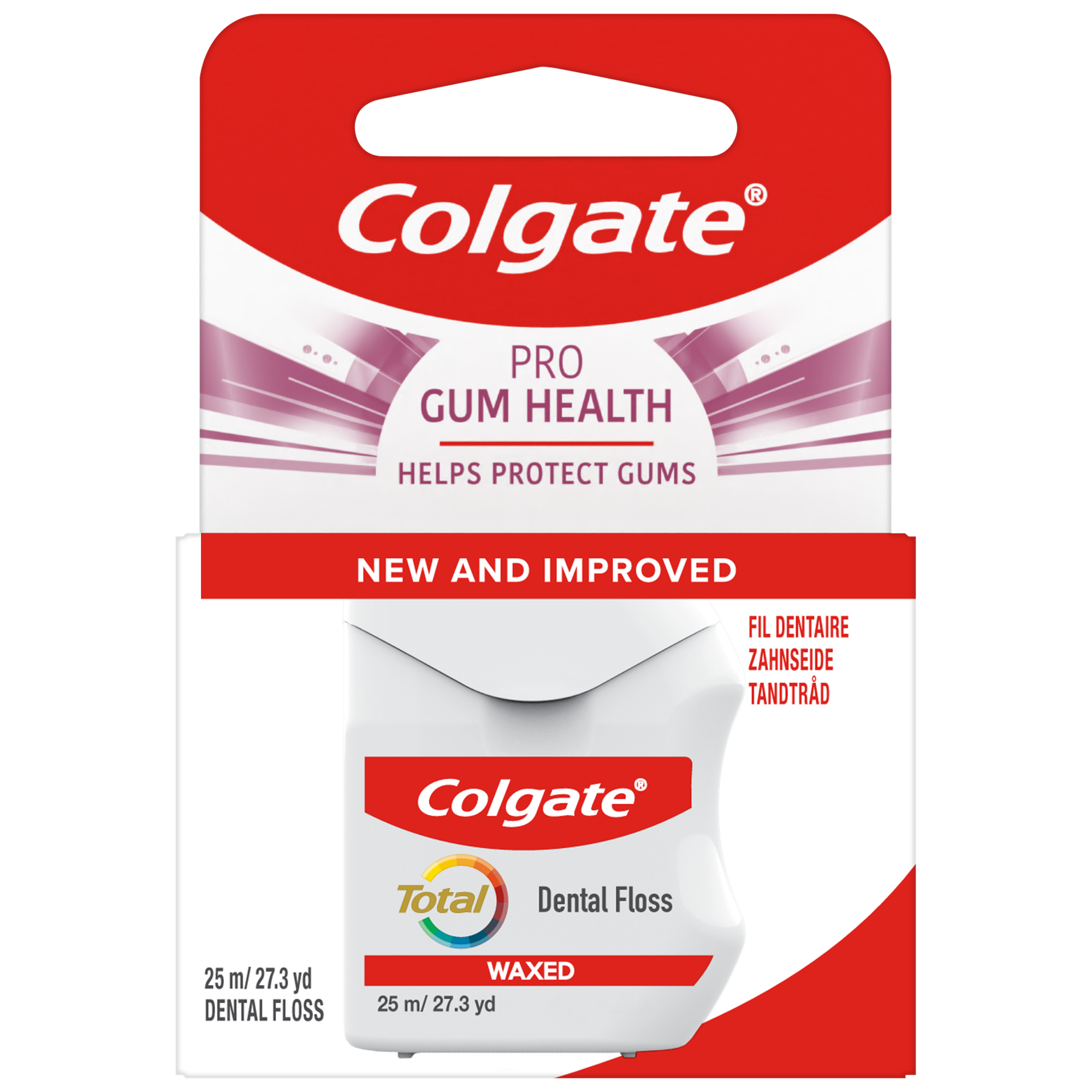
Oral biofilms are complex, structured communities of bacteria that live throughout the whole mouth on teeth, tongue, cheeks and gums. Biofilm accumulation, leading to dysbiosis, is recognised as the primary cause of common oral diseases such as caries and periodontal disease and of concerns like tartar and malodour. Uncontrolled biofilms can put everyone at risk3…so how can they be kept under control?
Effective biofilm management is a key strategy for prevention and for successfully achieving whole mouth health. Oral biofilms have defence mechanisms that make them difficult to control. One defence mechanism, is the synthesis of Extracellular Polymeric Substance (EPS) that many bacteria secrete. EPS allows bacteria to stick together and defend the biofilm from antibacterial attacks.
Colgate Total®, formulated with Dual-zinc + Arginine, has the ability to de-structures the EPS and works in three proven ways:
● Uniquely penetrates deep into biofilm - Arginine in Colgate Total® interferes with the EPS and destabilizes the biofilm. This allows Zinc to penetrate and accumulate deep into the biofilm where it can exert its antibacterial action1.2
● Disrupts biofilm to reduce biofilm mass - Dual-Zinc + Arginine Colgate Total® penetrates the biofilm, Dual-Zinc + Arginine starts disrupting the biofilm architecture2
● Inhibits further sustained bacterial regrowth - Dual-Zinc + Arginine in Colgate Total® provides less bacterial regrowth after 12 hours versus a traditional fluoride toothpaste2,*
These in-vitro studies support that Colgate Total®with Dual-Zinc + Arginine helps control biofilm by uniquely penetrating, disrupting, and inhibiting biofilms for 12 hours. Click here to find out more.
Highly effective in controlling bacteria
Colgate Total®with Dual-Zinc + Arginine enables superior biofilm control.*,1,2 An in-vitro study showed that Colgate Total® is highly effective in controlling bacteria across the whole mouth and in saliva. Clinical findings revealed reductions up to 41% higher than those obtained through brushing with a regular fluoride toothpaste alone.4
Superior clinical outcomes#,*
Furthermore, superior# clinical outcomes were confirmed in numerous clinical studies,5-7 demonstrating significantly better control of plaque, gum problems,tartar and malodour, compared to a standard non-antibacterial sodium fluoride toothpaste.
● Plaque reduction - 34.4%5,^
● Malodour reduction - 30.8%7,^
● Reduction in gum problems - 26.6%5,^
● Reduction in tartar - 40.1%6,^
Colgate Total® is the advanced way to achieve Whole Mouth Health by proactively controlling and protecting against bacteria on 100% of mouth surfaces, Teeth, Tongue, Cheeks and Gums.††
Empower every one of your patients by recommending Colgate Total® so that they can achieve superior biofilm control1,2,†† for better, more complete oral health.
Click here for further information on how you can achieve effective biofilm management with Colgate Total®.
ENDS
* Colgate Total® provides superior in-vitro delivery, penetration, and retention of Zinc through Arginine technology for biomass reductions vs Zinc control toothpaste.
† Mass spectrometry images of salivary 10-day biofilms treated once with toothpaste slurry and regrown overnight under constant artificial salivary flow (10 mL/hr).
‡ Confocal images of established salivary 40-hour biofilms grown in-vitro under flow and then treated once for 2 minutes with water control (top) or Dual-Zinc + Arginine technology (bottom).
§ Bacterial biofilms imaged after one treatment with either non-antibacterial fluoride toothpaste or Dual Zinc + Arginine toothpaste slurry followed by a 12-hour regrowth period.
# Compared with non-bacterial sodium fluoride toothpaste.
^ Statistically significant reduction vs non-antibacterial fluoride toothpaste.
†† vs ordinary non-anti-bacterial fluoride toothpaste.
References:
1. Manus L, et al. J Clin Dent 2018;29(Spec Iss A)A10–19. 2. Daep C, et al. August 2019, data on file. 3. Sanz et al, J Clin Periodontol. 2017;44(Suppl 18):S5–S11. 4. Prasad K et al, J
Clin Dent 2018;29 (Spec Iss A). 5. Li X, et al. J Dent Res 2019;98 (Sepc Iss A):3444. 6. Seriwatanachai & Mateo, Sept 2016, data on file. 7. Hu D, et al. J Clin Dent 2018;29 (Spec Iss A) A41-45.
Join us
Get resources, products and helpful information to give your patients a healthier future.
Join us
Get resources, products and helpful information to give your patients a healthier future.









